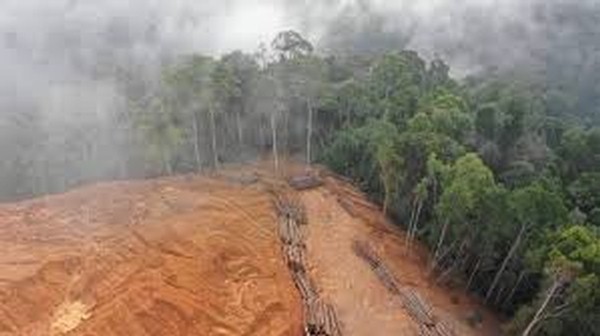Findings of a recent study published in the journal Nature Communications show that in the last 20 years, deforestation has caused the loss of 18 percent of Africa’s montane forests, The EastAfrican reports.
As a result, the air temperature in these areas has increased by 1.4 degrees Celsius, and the cloud level has risen by 230 meters, impacting water capture.
Tropical montane rainforests are typically humid, cool and wet biodiverse ecosystems located in mountainous regions where cloud cover keeps tree canopies immersed in mist. They play a crucial role in capturing water from fog and clouds, ensuring a steady supply of high-quality water to lowland regions.
However, the recent study by scientists from Kenya, South Africa, Ethiopia, Finland and Germany, reveals that if current levels of deforestation continue, another half a million hectares -an area roughly twice the size of Mauritius-could be lost by 2030.
While montane deforestation is accelerating globally at an annual rate of 0.31 per cent, tropical montane forests in Africa have experienced the highest rate of deforestation in the last two decades -0.48- per cent per year. Rates of montane deforestation in unprotected areas of Africa can be as high as 3 per cent per year.
The main driver of montane deforestation in Africa has been attributed to small-scale cropland expansion, with other factors such as urbanization, large-scale commodity crops and forest fires playing a lesser role.
“The rise in cloud level disrupts the natural process of water harvesting, where fog condenses on the forest canopy, depositing moisture on trees and the ground. With fewer forests and a higher cloud base, this critical process is no longer functioning as it should,” explained Professor Petri Pellikka, director of the Taita Research Station in Kenya.
Forests store water more effectively than open lands, enhancing the ability of montane areas to serve as reservoirs for surrounding communities.
In the Taita Hills of Kenya, for example, research has shown that forested areas collect 20 per cent more water than deforested regions, largely due to the additional fog water captured by trees.
Kenya’s key water towers, including Mount Kenya, Mau Forest, Aberdares and Mount Kilimanjaro, are among the regions most affected by deforestation.
Around Kilimanjaro, 50 per cent of forest cover has been lost since 1880, according to Andreas Hemp of the University of Bayreuth, who has studied the mountain for three decades.
“The results call for urgent action as montane deforestation driven by cropland expansion and logging is jeopardizing biodiversity and vital ecosystem services, including water supply,” said Temesgen Abera, a visiting Ethiopian scholar at the University of Helsinki.





